Browse our comprehensive product guides and documentation

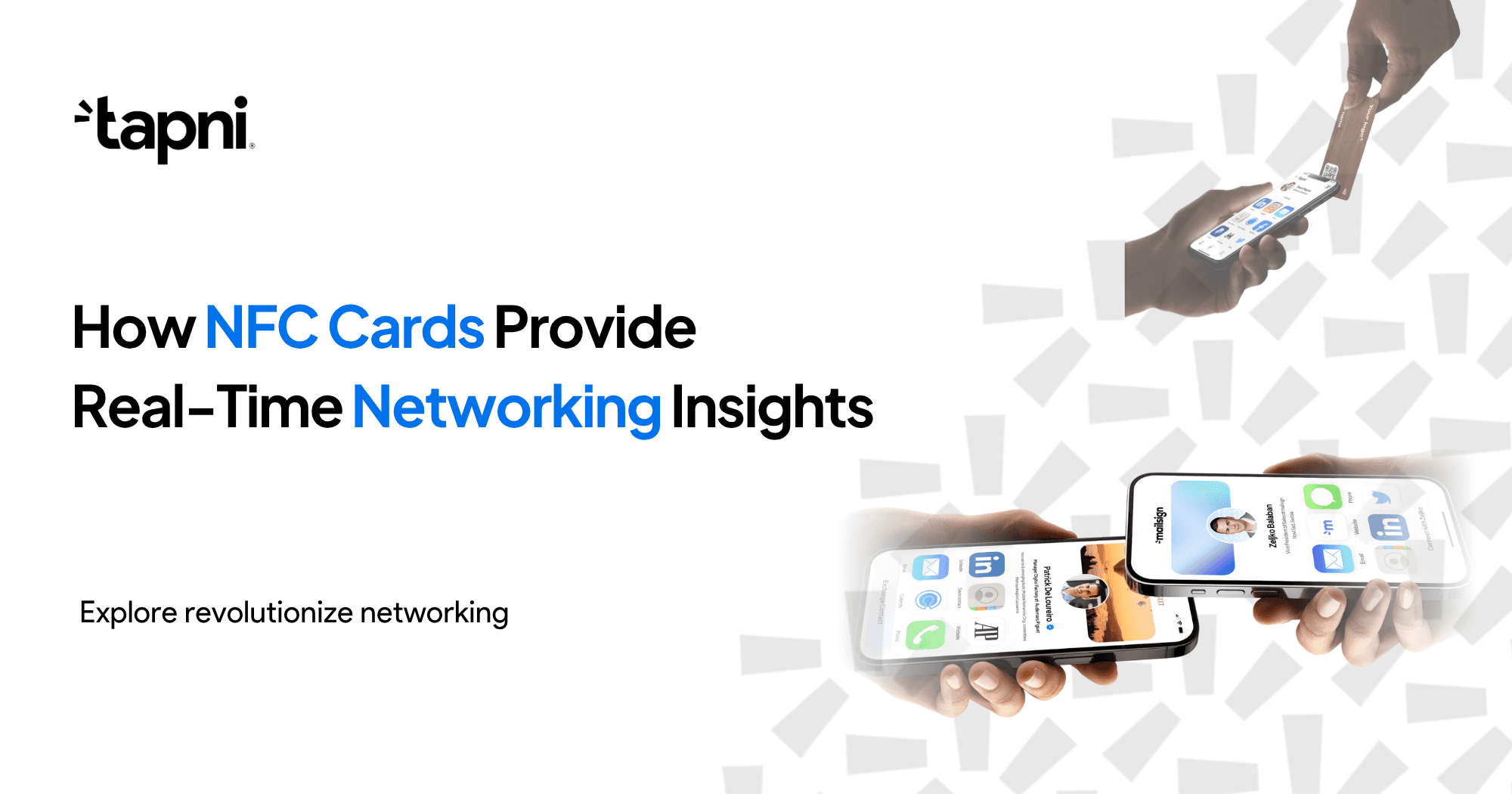
NFC digital business cards are transforming how professionals share information. With a simple tap, these cards instantly transfer contact details and track engagement data, eliminating the need for apps or QR codes. They’re reusable, reduce waste compared to paper cards, and provide real-time analytics to improve networking strategies.
Key Benefits:
How It Works:
Tapni Analytics gives you a clear picture of how your digital business cards perform across teams, events, and channels. From the first tap to the final conversion, you can see what’s working, fix what isn’t, and scale what converts.
Tapni is built with privacy in mind—granular consent on lead forms, data retention controls, and GDPR-friendly exports—so you can capture more data without compromising trust.
Bottom line: Tapni Analytics turns everyday networking into a measurable, repeatable growth channel—so your team spends less time guessing and more time closing.
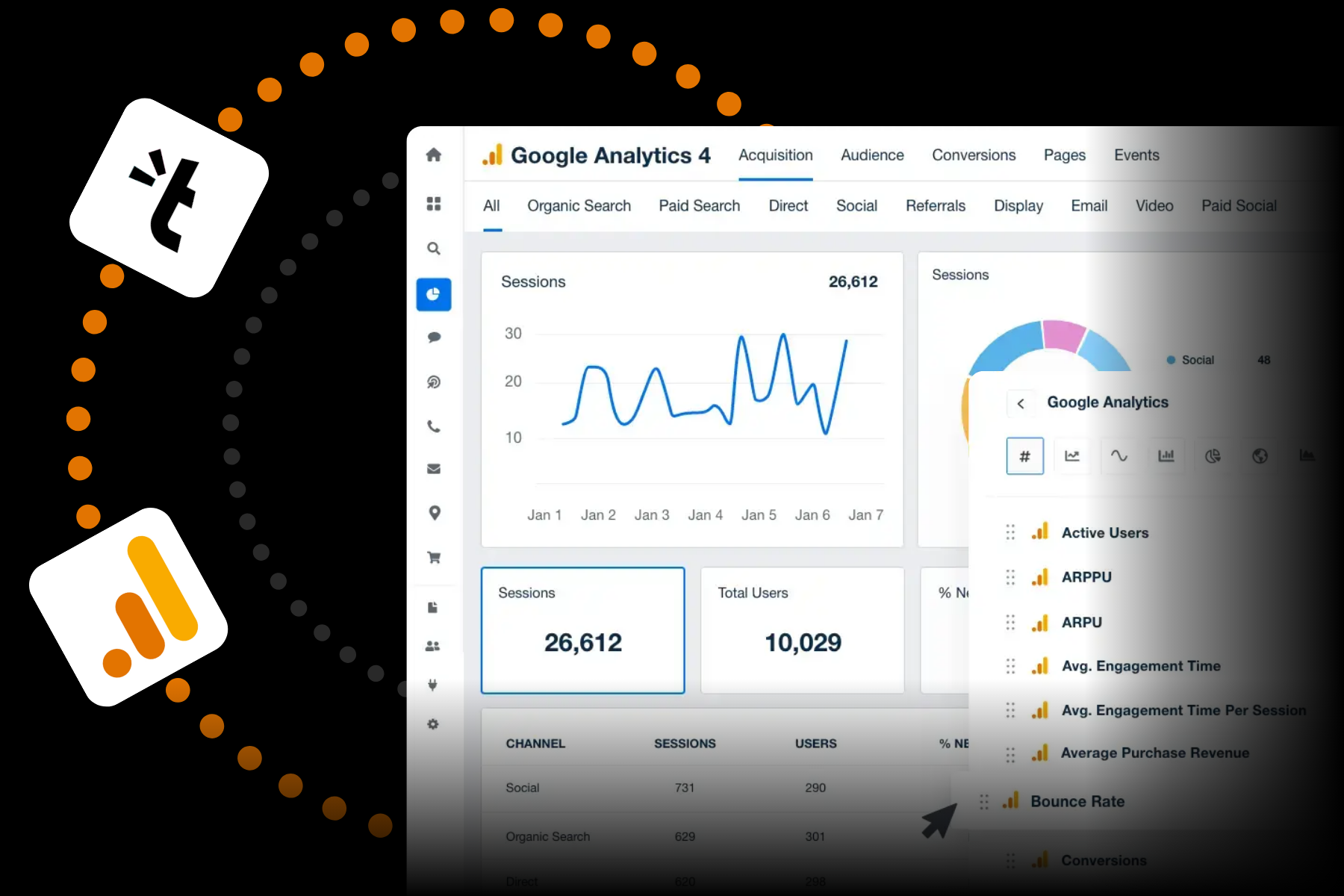
Setting up NFC cards involves linking them to digital profiles, integrating them with CRM systems, and using dashboards to track interactions. Once everything is in place, these cards can automatically gather valuable insights with every tap. Here's how to connect your NFC cards to digital platforms and CRM systems for real-time data collection.
The first step is linking your NFC card to a personalized digital profile that logs every interaction. With tools like Tapni, you can create a digital presence that includes your contact information, social media links, and lead capture forms.
You can also customize your profile to reflect your brand by adding your company logo, brand colors, and specific call-to-action buttons that encourage engagement. To make the most of your profile, embed lead capture forms that collect additional details, such as the prospect's company size, industry, or project timeline. This extra layer of information helps you gain deeper insights and makes follow-ups more effective.
Integrating your NFC cards with CRM platforms like Salesforce or HubSpot can automate lead management. Begin by mapping key fields, testing the integration with sample data, and setting up automation rules for timely follow-ups. This eliminates manual data entry and ensures new contacts are seamlessly added to your sales pipeline.
For example, HubSpot integration enables instant data transfer and real-time tracking of customer interactions. Its marketing and sales tools work perfectly with NFC card data, letting you set up automated workflows based on how prospects engage with your digital profile.
One case study highlighted the impact of CRM integration: when NFC cards were tapped, contact details were automatically uploaded to the CRM. This streamlined process led to a 30% boost in lead conversion rates due to faster and more accurate follow-ups.
Automation rules, like triggering a welcome email or assigning follow-up tasks, further simplify lead management and ensure every interaction contributes to your insights.
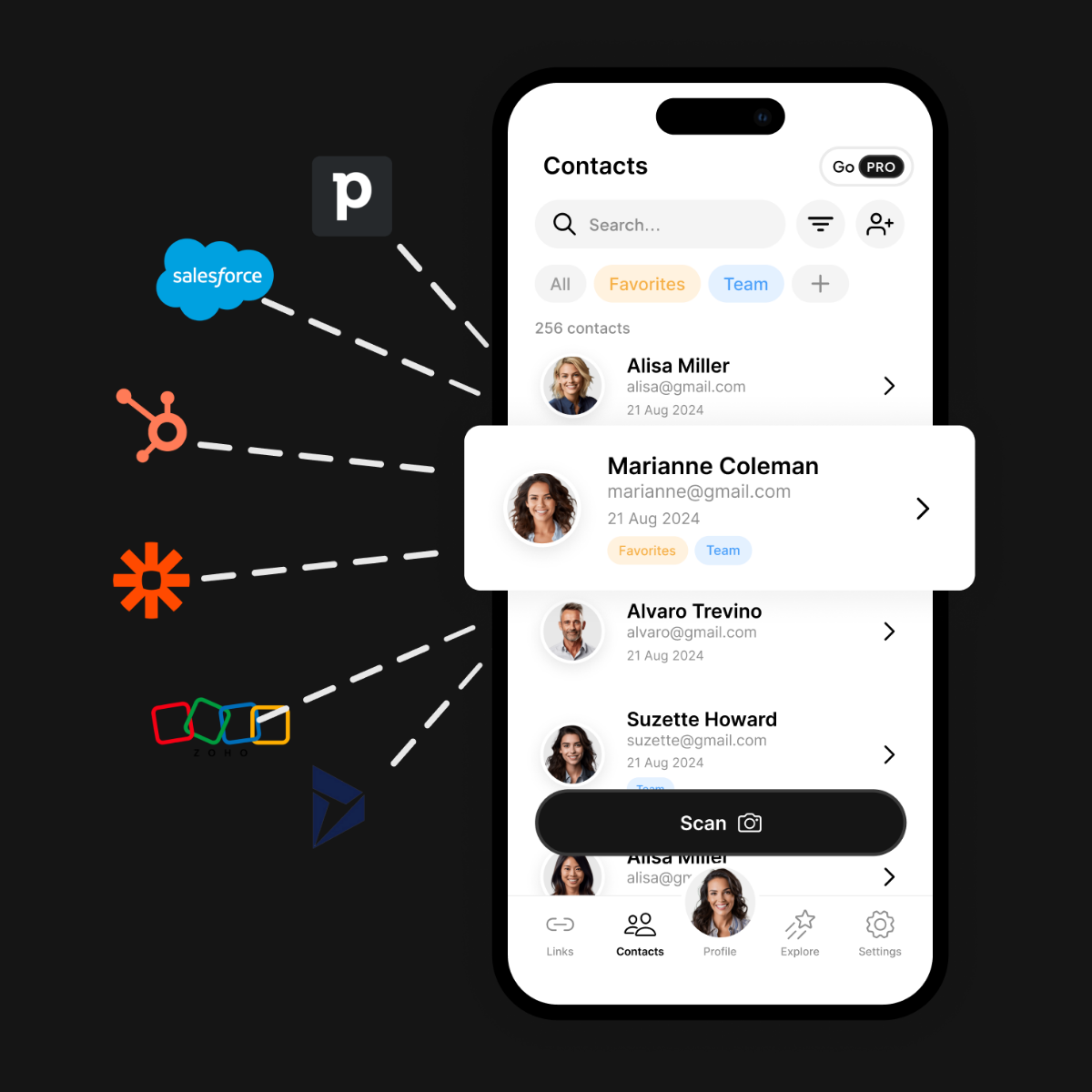
Dashboards are essential for monitoring performance, tracking networking metrics, and automating follow-up tasks. They provide a clear view of individual and team activities, lead generation across events, and brand consistency across all digital profiles.
To set up a dashboard, create user accounts for your team, assign roles and permissions, and configure data-sharing settings. From a single interface, administrators can manage all digital business cards, ensuring consistent branding while still allowing team members to customize their profiles.
Key metrics available in these dashboards include the number of leads captured, conversion rates by event type, and revenue generated through digital card referrals.
Research shows that digital business cards speed up lead capture and follow-up by 73% compared to traditional paper cards. Business development teams also report 4x higher contact retention rates and process leads 4x faster when using digital cards over traditional methods.
Dashboards also enable advanced features like assigning leads based on territories, tagging contacts by region or industry, and triggering email sequences tailored to specific buyer personas. This ensures that every NFC interaction is followed up on quickly and contributes valuable data to your overall networking strategy.
When you link your NFC cards to your digital profiles and CRM systems, every interaction starts generating valuable data. This approach takes networking from being a guessing game to a strategy backed by concrete numbers, showing you exactly which metrics matter most. Let’s dive into the types of data you can track and how it all works.
NFC cards collect essential metrics that give you a detailed picture of your networking efforts. You can monitor:
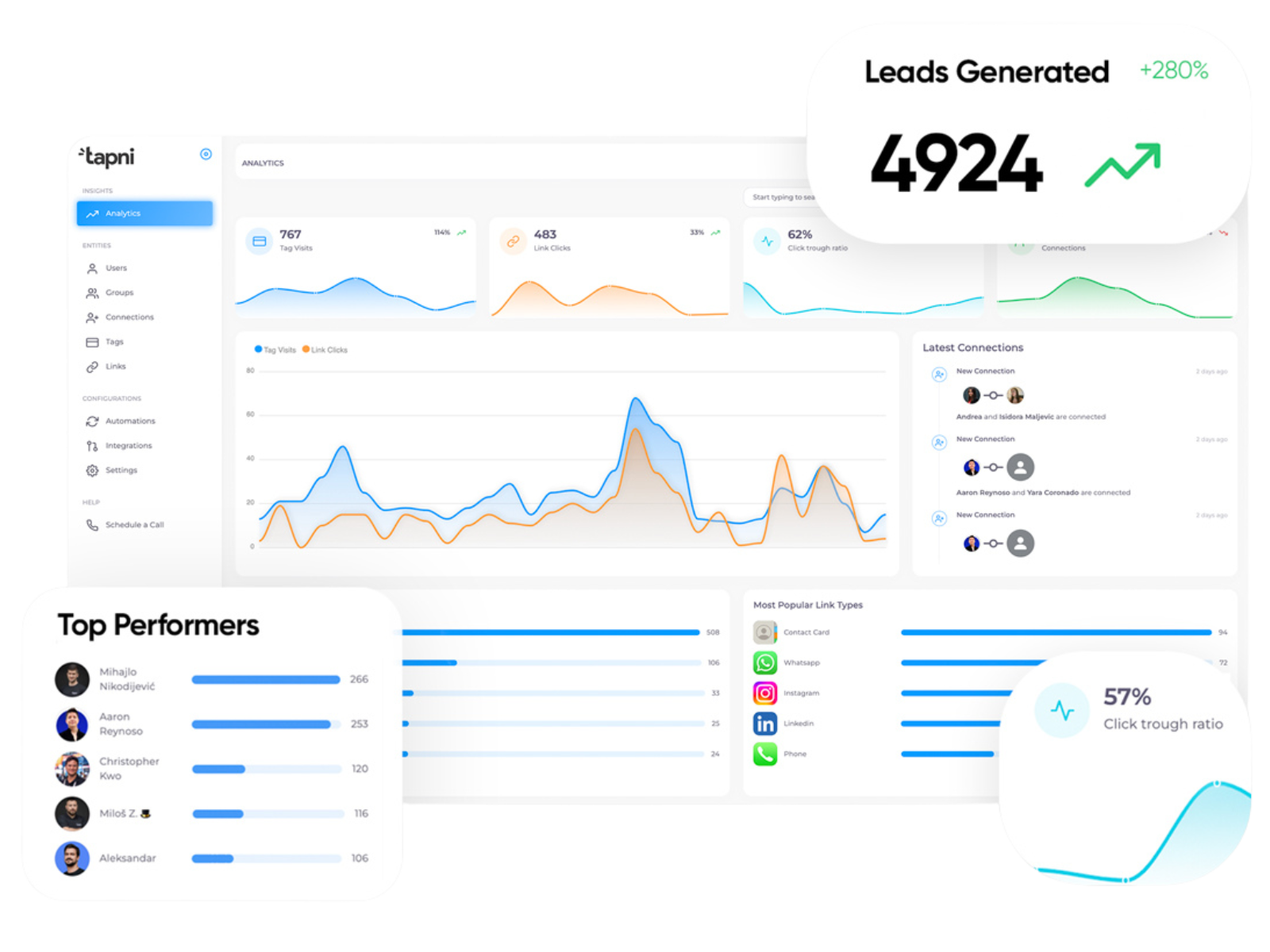
The beauty of NFC technology lies in its speed. Each tap of your NFC card instantly creates a data point that’s logged into your dashboard. The system captures details like time, location, and device information the moment the interaction happens. As users engage further with your digital profile, additional data is recorded in real time. This seamless flow of information into your CRM system opens up opportunities for immediate follow-ups.
Once the data is collected, your dashboard transforms it into insights you can act on. For example, reports on Most Active Users and Tag Visits help you identify which events or activities are driving the most engagement. Meanwhile, tracking Most Popular Link Types shows whether prospects prefer connecting through LinkedIn, email, or phone. Tapni’s dynamic dashboard makes it easy to keep an eye on these key metrics, helping you fine-tune your networking strategy as you go.
Tap into networking data to refine your approach and build stronger professional connections. By turning analytics into actionable strategies, you can make smarter decisions and enhance the way you engage with others.
Start by categorizing your contacts based on how they interact with you. For example, someone reaching out on LinkedIn for collaboration might fall into a different group than a website visitor exploring your services. Use this categorization to send personalized follow-ups - like automated CRM messages - timed for when they’re most likely to engage, such as Tuesday mornings. To make these messages stand out, reference the context of your last interaction.
Take it a step further by embedding these insights into your CRM workflows. This ensures your follow-ups are not only timely but also tailored to the individual.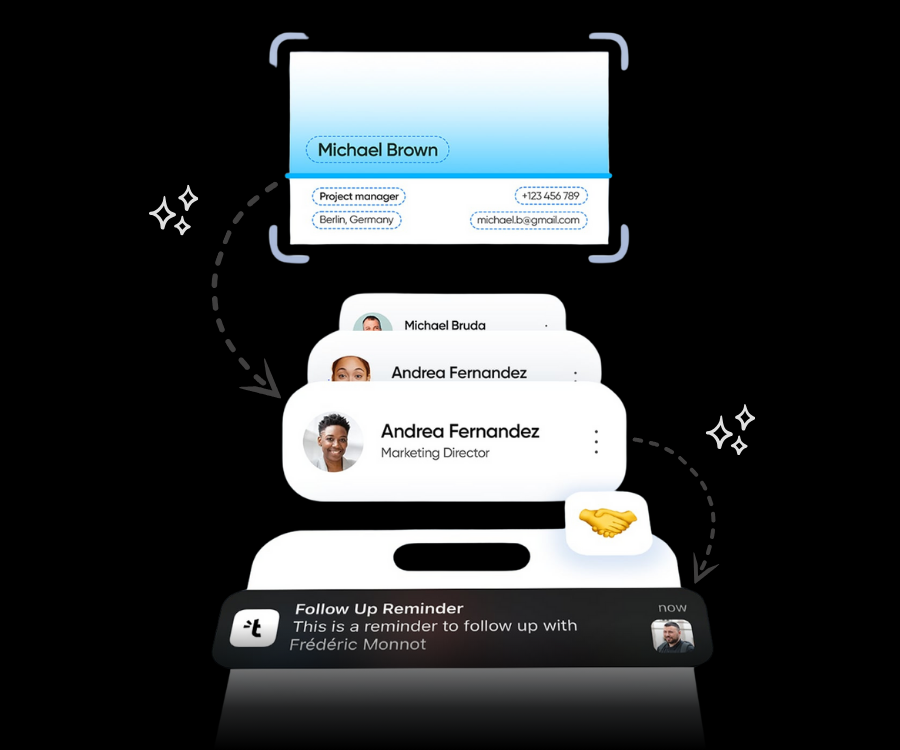
Integrating NFC data into systems like Salesforce or HubSpot can streamline your workflows. When someone taps your NFC card, their information flows directly into your CRM, triggering automated processes. These could include assigning lead scores, segmenting contacts, or sending customized follow-up messages.
For example, you can set up a lead scoring system that evaluates interactions. A person who explores multiple pages on your website after tapping your card might earn a higher score than someone who only views basic details. These scores help you focus your energy on the most engaged prospects.
Once you’ve segmented your contacts, craft messaging that speaks directly to their interests and needs. This kind of targeted outreach can significantly improve your results. And with automated workflows in place, you can continuously refine your strategies as new data comes in.
Regularly review your metrics to see what’s working and what’s not. If certain calls-to-action or event types consistently bring in high-quality leads, prioritize those in the future.
A/B testing can also help fine-tune your digital profile and calls-to-action. For instance, you might try two versions of your profile and compare engagement rates. Your dashboard will reveal which version performs better, giving you the data needed to optimize how you present yourself.
Pay close attention to conversion rates - the journey from initial contact to a meaningful business relationship. If you’re getting plenty of taps but not many follow-ups, your digital profile might need clearer calls-to-action. Similarly, if people are engaging with your content but not reaching out, consider adding direct contact options or scheduling links to make it easier for them to connect with you.
NFC card data offers a clear picture of how well your brand connects with your audience. By digging into these insights, you can fine-tune your professional identity and deliver memorable, consistent experiences.
Understanding how people interact with your branded profile is key. Metrics like time spent on specific sections, click-through rates on content, and preferred contact methods can reveal what resonates most with your audience.
Your dashboard highlights what grabs attention - whether it’s extended views of your portfolio or frequent clicks on your LinkedIn link. For example, if users spend a lot of time browsing your profile but don’t save your contact info, it might signal the need for a stronger call-to-action. On the other hand, quick saves with minimal browsing could mean your value proposition is already crystal clear.
Use this data to refine your profile’s layout. High engagement in certain sections shows where to focus your efforts, while underperforming elements might need a fresh approach. Testing different visuals or messaging can help you figure out what better connects with your audience.
These insights don’t just apply to your profile - they also extend to other branding tools like email and video, which we’ll dive into next.
Branded email signatures and virtual backgrounds are great ways to extend your NFC reach while collecting valuable tracking data from digital interactions.
With email signatures that include embedded NFC links, you can track engagement long after the initial conversation. For instance, if someone clicks your signature link weeks later, this activity is logged in your dashboard, signaling renewed interest and helping you prioritize follow-ups.
Similarly, virtual backgrounds during video calls subtly reinforce your brand. While you can’t directly monitor views of these backgrounds, you can track profile visits after meetings where they were used. This correlation sheds light on how consistent visuals contribute to overall engagement.
Tapni’s email signature feature integrates seamlessly with NFC data, giving you a complete view of how contacts interact with your brand across channels. This unified tracking helps map the entire customer journey - from the first NFC tap to building long-term professional connections.
This integrated approach sets the stage for deeper analysis of your brand’s performance, which we’ll explore below.

To understand what strengthens your brand, compare key metrics - like how often profile views lead to meetings or new connections.
Generate monthly reports using your dashboard data to track trends. Look at metrics such as average profile engagement time, the most-clicked content, and follow-up response rates. These insights help you adjust your branding strategy as needed.
Experiment with A/B testing to see what works best. Test variations in your headshot, call-to-action wording, or even the layout of your profile to identify what drives better engagement.
Keep an eye on repeat interactions - contacts who revisit your profile multiple times are often your most engaged prospects. This behavior can reveal which aspects of your brand leave a lasting impression and encourage ongoing interaction.
NFC digital business cards bring a modern, data-focused approach to networking, offering professionals real-time insights to improve their connections.
NFC technology stands out for its ability to instantly provide useful data for every interaction. These cards not only track engagement patterns but also help reduce paper waste and integrate effortlessly with CRM systems. This ensures every meeting or handshake can lead to meaningful follow-ups.
If you're environmentally conscious, there's even more to appreciate. Tapni supports eco-friendly initiatives by planting a tree for every product sold, aligning your networking efforts with a greener future.
CRM integration simplifies your workflow by automatically syncing contact details, eliminating manual entry, and reducing the risk of losing important leads. With this setup, your dashboard becomes a powerful tool for making informed business decisions.
Real-time analytics are another game-changer. They let you see which parts of your profile attract the most attention or identify the best times for follow-ups. This means you can adjust your strategy immediately, without waiting months to see what works.
Getting started is simple. Begin by exploring Tapni’s NFC solutions, which are designed to be both flexible and user-friendly. The Free plan is a great option if you’re just testing the waters - it includes features like direct link sharing, QR code profiles, and basic analytics, all at no cost.
If you’re ready to step up your networking game, the Business plan is available for $4.99 per user per month. This plan includes free NFC cards, unlimited contact scanning, CRM integrations, and advanced analytics. It’s perfect for professionals who want to automate follow-ups and enjoy priority support.
Setup is quick and easy. Just integrate your CRM, customize your profile, and start collecting data right away with AI-powered scanning and branded email signatures. These tools allow you to measure your success and refine your approach based on clear, actionable results.
NFC business cards offer a greener choice compared to traditional paper cards. By cutting down on paper usage, they help reduce deforestation and waste, making them a step toward a more sustainable future. Choosing reusable digital cards not only lessens environmental harm but also reflects a conscious effort to support eco-friendly practices.
Beyond their environmental benefits, NFC cards are incredibly practical. Unlike paper cards that require reprinting every time your details change, NFC cards let you update your contact information digitally in an instant. Plus, they make networking a breeze - just a quick tap, and your information is shared effortlessly.
Integrating NFC business cards with CRM systems like Salesforce or HubSpot is simple and efficient. With Tapni's native connectors or API integrations, you can seamlessly connect your NFC-enabled digital business cards to your CRM. This setup ensures that any lead data collected from card scans is instantly captured and added to your CRM database.
Once the integration is in place, you can create automation rules within your CRM to streamline tasks. For example, you can automate follow-up emails, assign tasks, or organize leads into specific categories. Plus, the real-time analytics from this integration provide valuable insights, helping you monitor engagement and fine-tune your networking approach for even better outcomes.
Real-time data from NFC cards offers a clear window into how and when your shared contact details are being accessed. By examining engagement trends - like how often people interact with your information and which content grabs their attention - you can fine-tune your networking approach to make stronger connections.
This data also boosts brand visibility by shedding light on customer preferences and behaviors. Armed with these insights, you can create personalized follow-ups and tailored marketing campaigns that build stronger relationships and leave a memorable impression on potential clients or collaborators.